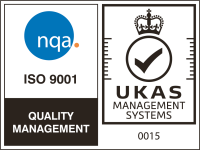Modern oils and greases utilise a large range of advanced additives to add advantageous properties. So what are these additives? The main groups are as follows:
Antioxidants
Oxidation of oil occurs within machinery because of a number of different factors, such as exposure to heat, pressure and the presence of metal. Oxidation results in the decomposition of the oil stock, and other additives. Oxidation is one of the main causes of failure and reduced life of an oil. Thus, antioxidants are perhaps the most important additive used within lubricants, and will by and large be found in nearly all commercially available oils and greases. In fact, the replenishment of anti oxidant additives following oil testing can rejuvenate an oil and significantly prolong effective service life.
Detergents
Detergents, just as with your washing up detergent, help to keep surfaces clean. During normal operation, and particularly within automotive engines (due to combustion), oil breakdown (sometimes because of oxidation and other factors) end up leaving sludge, varnishes and resins that mark and potentially inhibit the functioning of the machinery, use extra energy or increase machinery wear. Detergents work by lifting these deposits away, and forming a protective film over the machine parts that avoids any future deposits. This is often achieved by creating an electrical charge on the metal surface. Deposits also neutralize harmful acids.
Anti-Wear Additives
Anti wear additives help to assist the reduction of wear on metal components. Primarily they offer protection to the metal surface for any incidences where the oil film breaks down. They work by reacting with the metal surface and creating a protective film.
Metal De-activators
For many reasons metal particles may become present within an oil or grease, perhaps from machine wear or contamination. These metal particles can potentially cause a lot of damage to machine parts. Metal de-activators inhibit the catalytic effects of metal ions, and therefore neutralize the damage potential.
Rust & Corrosion Inhibitors
Rust and corrosion is clearly a large problem for metal machinery parts. Oftentimes this can be caused by acids formation, or perhaps exposure to salt water etc. Rust and corrosion inhibitors work in a variety of ways.
Friction Modifiers
Friction modifiers offer low level protection from wear. They also help to reduce the energy required to move the parts by reducing friction.
EP Additives
The big brothers of friction modifiers. Extreme Pressure (EP) additives offer protection to the metal surfaces from extreme pressures or shocks. These additives again often work by forming a bond with the metal surface, and creating an additional layer of protection to the lubricating film. EP additives are split in to the groups of temperature activated and none temperature activated EP additives.
Viscosity Improvers
Viscosity improvers help to improve a lubricants viscosity index (that is, the degree to which the lubricants viscosity alters throughout temperature fluctuations. ) This helps to ensure that an appropriate thickness of lubricant is always present. Viscosity improvers/modifiers are generally polymeric molecules that are temperature sensitive. At higher temperatures the chain relaxes and affects the fluids viscosity, at lower temperatures it contracts and does not interfere with the viscosity. Often used in high temperature grease.
Anti-Foaming Agents
Nearly all lubricants foam to one degree or another. Foaming is a problem because it causes damaging oxidation, and acid build up. Anti foaming agents act to limit this foaming, particles of the additive contact the bubbles and cause them to rupture.
It is worth noting that many additives offer a number of these characteristics at once. It is also worth noting, that as there is a limit to the metal surface available for these additives to bond to, a choice will have to be made between certain characteristics. Increasing the amount of a certain additive for a certain characteristic may reduce the effectiveness of another. As such the blending of lubricants with additive packages is a fine art that must take in to account the various requirements of the oil or grease, and the various technologies available. New developments, creating different options, and the various base oils stocks or grease thickeners (also sometimes with some of these inherent characteristics) must also be considered.


Leave A Comment
You must be logged in to post a comment.